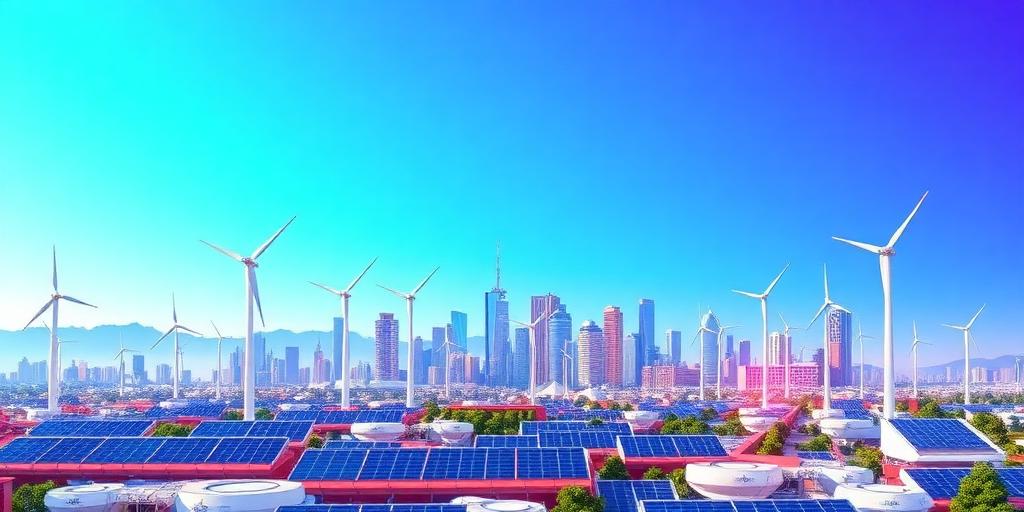Understanding the Future of Renewable Energy
The world is at a critical juncture. Climate change is no longer a distant threat; it's a present reality. As we grapple with its effects, the transition to renewable energy sources has become paramount. But what does the future of renewable energy actually look like? Let's dive in.
The Rise of Renewables: A Quick Overview
Renewable energy, derived from naturally replenishing sources, includes solar, wind, hydro, geothermal, and biomass. Unlike fossil fuels, these sources produce little to no greenhouse gas emissions, making them essential for mitigating climate change.
Over the past decade, the renewable energy sector has experienced unprecedented growth, driven by technological advancements, supportive government policies, and increasing public awareness. Solar and wind power, in particular, have seen dramatic cost reductions, making them competitive with traditional energy sources.
Key Trends Shaping the Future
Several key trends are poised to shape the future of renewable energy:
Technological Innovation: Ongoing research and development efforts are continuously improving the efficiency and affordability of renewable energy technologies. For example, advancements in solar panel design are boosting energy conversion rates, while innovations in battery storage are addressing the intermittency challenges of solar and wind power.
Policy Support: Governments worldwide are implementing policies to promote the adoption of renewable energy. These include tax incentives, subsidies, renewable portfolio standards, and carbon pricing mechanisms. Such policies create a level playing field for renewables and encourage investment in the sector.
Decentralization of Energy Systems: Traditional energy systems are characterized by centralized power plants and long-distance transmission lines. The future, however, is likely to see a more decentralized model, with distributed generation sources such as rooftop solar panels and community wind farms playing a significant role. This decentralization enhances energy security and resilience while reducing transmission losses.
Electrification of Everything: As renewable energy becomes more prevalent, there is a growing trend towards electrifying various sectors, including transportation, heating, and industry. Electric vehicles (EVs) are rapidly gaining popularity, and electric heat pumps are becoming an increasingly attractive alternative to traditional heating systems. This electrification drives demand for renewable electricity and further accelerates the transition away from fossil fuels.
Challenges and Opportunities
Despite its immense potential, the renewable energy sector faces several challenges:
Intermittency: Solar and wind power are inherently variable, depending on weather conditions. Addressing this intermittency requires investments in energy storage solutions and grid infrastructure.
Grid Integration: Integrating large amounts of renewable energy into existing grid systems can be complex. Upgrades to grid infrastructure are needed to ensure that renewable energy can be transported efficiently and reliably.
Land Use: Large-scale renewable energy projects, such as solar farms and wind farms, can require significant amounts of land. Careful planning and siting are essential to minimize environmental impacts and address community concerns.
However, these challenges also present significant opportunities for innovation and economic growth. The development of advanced energy storage technologies, smart grids, and efficient land-use strategies can unlock the full potential of renewable energy.
The Path Forward
The future of renewable energy is bright, but realizing its full potential requires concerted efforts from governments, businesses, and individuals. Key steps include:
Investing in Research and Development: Continued investment in R&D is crucial for driving technological innovation and reducing the cost of renewable energy.
Implementing Supportive Policies: Governments should implement policies that create a stable and predictable investment environment for renewable energy.
Modernizing Grid Infrastructure: Upgrading grid infrastructure is essential for integrating large amounts of renewable energy and ensuring grid reliability.
Promoting Public Awareness: Educating the public about the benefits of renewable energy can help drive demand and build support for the transition.
By embracing these strategies, we can accelerate the transition to a clean energy future and create a more sustainable world for generations to come.









